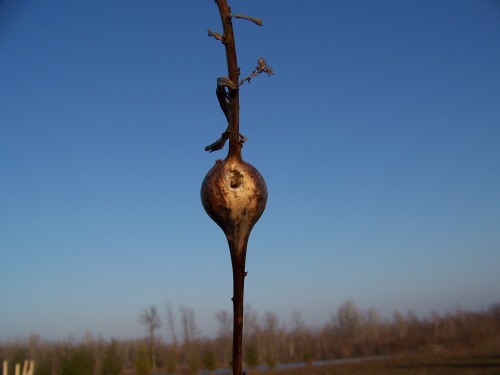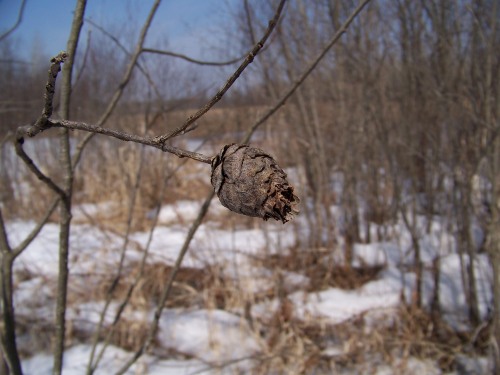
Pretty much anywhere you find goldenrod, you can see goldenrod galls. These ball-like formations on the stem of the goldenrod plant are winter homes for the larvae of the Goldenrod Gall Fly (Eurosta solidaginis). The female fly deposits eggs in the plant stem. The larva secretes chemicals that cause the plant to create a gall. In spring, the larva chews a tunnel to the edge of the gall and then returns to the centre of the gall to pupate. When the adult fly emerges, it uses the tunnel to exit the gall. You can find many galls with holes drilled in them over the winter, evidence of a visit from a downy woodpecker or chickadee who has removed the larva and enjoyed a winter snack.

When I noticed these “pine cones” on shrubs at the edge of a wetland area, I was confused. Unlike the goldenrod galls, which stand out as deformities on the plant stem, these pine cones look very much like a part of the plant itself. However, these pine cones are on willow stems and are actually the galls of the tiny Pine Cone Willow Gall Midge (Rhabdophaga strobiloides). The female lays eggs at the tip of the willow stem and the larva burrows into the tip, resulting in a gall at the end of the twig. The gall is used by other insects as well as the midge larva.
